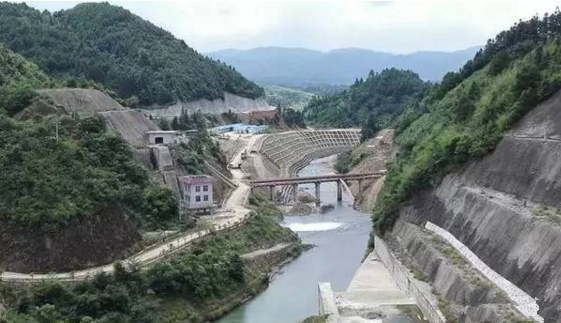Xiangshuiba Reservior in Luliang County, Qujing
Overview
Xiangshuiba Reservoir (响水坝水库) is located in the northern part of Luliang County (陆良县), Qujing (曲靖市), on the west side of Xiangshuiba Village (响水坝村). It is the first masonry gravity dam built on the upper reaches of the Nanpan River (南盘江). Local folklore speaks of a legend called “the River God built the dam.” Historical records indicate that this area experienced severe flooding, comparable to the tides at Haimen (海门) and the dramatic cliffs of the Yellow River (黄河).
In the Ming Dynasty, specifically in the first year of the Tianhu Era (1621 AD), Luliang suffered a significant drought that caused the Panjiang River (盘江) to run dry for six months. It was during this time that the initial structure of Xiangshuiba was constructed. The original dam was built using large flat stones and measured approximately 10 meters in length and over 1 meter in height. After its completion, water cascaded over the dam, creating a sound that echoed, which led to its name, Xiangshuiba.
Construction and Features
Completed in 1960, Xiangshuiba Reservoir was designed with a storage capacity of 19.8 million cubic meters and a runoff area of 2,486 square kilometers. The reservoir project consists of a clever gravity dam, auxiliary dams, a rolling water dam, a low-hole sand drainage sluice, and numerous water conveyance channels.
The reservoir showcases the breathtaking scenery of “high gorges leading to flat lakes,” and since its establishment, it has attracted numerous leaders from both within and outside the province for inspection and research. The construction of this reservoir stands as a remarkable achievement in water conservancy engineering.
How to Get There
To reach Xiangshuiba Reservoir, visitors can:
- Fly into Kunming Changshui International Airport (昆明长水国际机场).
- From the airport, take a bus or rent a car to Qujing City (曲靖市), which is approximately 200 km away.
- From Qujing, take a local bus or taxi to Luliang County (陆良县) and head towards Xiangshuiba Village (响水坝村).
Travel Tips
- Best Time to Visit: The ideal times to visit are spring and autumn, when the weather is mild and the scenery is at its most beautiful.
- Photography: Bring your camera; the natural landscape and the dam create fantastic photo opportunities.
- Local Cuisine: Don’t miss the chance to try local dishes in nearby villages for an authentic taste of the region.
- Safety Precautions: Be cautious near water bodies, and check local weather conditions before planning your visit.















